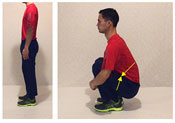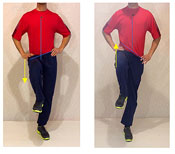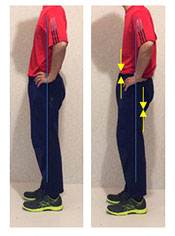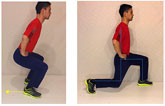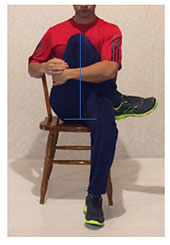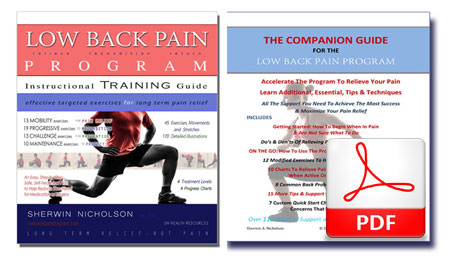Simple, Effective Exercises For Lower Back Pain Relief
Sherwin Nicholson | SN Health Resources |Updated May 7, 2020
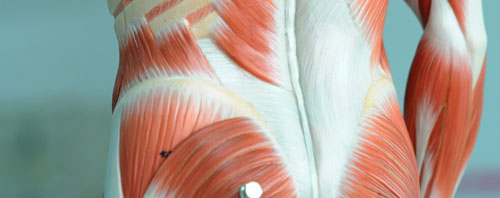
Exercises for back relief? Yes!
You can do them in your home or anywhere for that matter.
Think of these 10 exercises as the simple, self-corrective, movements that you need to do right now to help yourself feel better and to keep you safe from injury. They only take but a minute each and will make a world of difference for you.
It doesn’t matter where you are, you can do these safe, effective and easy to perform, movements to help you recover faster.
It’s about reconditioning yourself back to normal
One thing I must warn you about is that if you find some or many of these moves hard to do, that’s your sign right there that you need them.
It takes time to master these 10 exercises for back pain because you’re trying to correct imbalances with these moves. That’s the key to getting better!
Click the Titles below to learn the corresponding exercise
For more in-depth help, explore this site and get the Program that has helped thousands.
As with all physical activities recommended on this site,
seek prior consent from your family doctor before attempting them.
Important: After trying them, be sure to go the download page for the full course. This course reverses your discomfort by teaching you step-by-step, in order, how to live without discomfort.
Pain whenever you are sitting
This lunge helps you to alleviate discomfort due to sitting for long hours at the desk, extensive periods of driving, too much couch sitting and for those with excessive posterior pelvic tilt. It is ideal for improving hip flexor flexibility.
Read this article about what to do when it hurts from too much sitting.
Pain when you stand for too long
Long hours of standing can worsen pelvic tilt and tighten your lower back. If you are experiencing a dull ache and require the need to sit often, this simple but challenging movement will benefit you.
This lunge also helps to return to neutral posture position.
Read this article about what to do when it hurts when standing.
When your back is stiff in the morning
Your hips, lower back and leg muscles tighten overnight
Use this shift to release tension and tightness. If you find it difficult to sleep due to tightness and stiffness, doing this movement regularly will relax those tight areas.
Read these articles about what it means when it hurts in the morning and tips to help you overcome it.
When spasms don’t go away
Spasms sometimes strike during a bending or twisting motion
This twist will help recondition weak muscles that can later trigger a ‘sudden’ spasm. Practice this often as it reduces your chance of spasm if you ‘reach for that object’ while in an awkward posture.
Read these articles about what you should do for your spasms and Tips to help with your spasms.
Tight hamstrings cause pain & stretching makes it worse
Tight hamstrings hurt your legs and back.
Poor hamstring stretches make it worse.
Use this exercise for relief. Avoid the common ‘lean forward to touch your toes’ method. This method is much safer and also helps to recondition your hips.
Read this article on why tight hamstrings are causing your discomfort.
Weak abdominals can worsen the pain
Weak abdominal muscles worsen anterior pelvic tilt
It is essential to perform this contraction routinely for relief. You can do it anytime you feel a dull ache while standing and feel the need to sit down. Practicing this as often as possible will relieve that dull ache in the lumbar region.
Read this article on why having weak abs are a big part of your problem.
Weak gluteal (cheek) muscles = back pain
Gluteal muscle activation is essential for proper lumbar support. This squat should be done every day. Chances are that you will find it difficult to perform at first. However, that is an indication of how much you should be incorporating it into your daily routine.
Sore buttocks? It’s your glute muscles.
Tight hips and weak glutes can hurt
Improve mobility and strength with this stretch/hold. You can perform it whenever you are sitting (watching TV). Raise and hold for minutes at a time for a more productive stretch in the hips and glutes.
An advanced hip technique for back problems
Hip muscle soreness and poor hip flexibility go hand in hand
This stretch increases hip flexibility to reduce hip muscle discomfort. Do not simply ‘lean forward’ but rather pull your belly button and pelvis into your thighs using your abdominals. Bend at the hips and not at the lower lumbar spine.
For stiff, tight and dull lumbar pain
Use this stretch to help release any tightness that you experience from chronic aches and stiffness. Perform for several minutes at a time per side and allow gravity to release your tension. Perform the STANDING ABDOMINAL stretch after to complement this movement.
Learn more about the dangers of muscle guarding.
These exercises are very helpful to use while on the path to recovery. It’s achieved when combined with all of the others in this easy-to-follow program.
If you are tired of enduring chronic struggle and are in need of a proven, structured, plan for relief, search this site for more valuable help and Download the eBook to start today.
“ I really liked this eBook as I have a lot of issues with my spine after a wreck and this had a lot of helpful information that I needed to know.”
“WITHIN A FEW DAYS OF DOING THESE EXERCISES DAILY, I COULD ALREADY FEEL THE DIFFERENCE. MY BACK DOESN’T ACHE NEARLY AS MUCH AS IT DID BEFORE I APPLIED SHERWIN’S TECHNIQUES”
Get more help here:
- How to Use the eBook (Where to begin? How many per day? How long?)
- What are the exercises that I will be doing and what is in the book?
- What have other customers thought about the book?
- Where can I order my own copy?
References:
- Evaluation of a specific home exercise program for lbp.-http://www.ncbi.nlm.nih.gov/pubmedhealth/PMH0002801/
- Effects of stabilization exercises on health-related quality of life in women with chronic lbp.-http://www.ncbi.nlm.nih.gov/pubmed/24184617
- Effects of complex rehabilitation training on LBP strength in chronic lbp – Jaeyong Park, PhD1 and Jung Chul Lee, PhD2,* J Phys Ther Sci. 2016 Nov; 28(11): 3099–3104. Published online 2016 Nov 29. doi: 10.1589/jpts.28.3099 PMCID: PMC5140808
More References for this page[/fusion_text]


